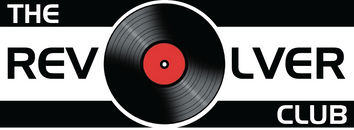- About Us
- Locations
- Events
- Community
- Vinyl Records
- Turntables
- Stereo Components
- Home Theater
- Music Production
- DJ
- Watches
- Guides
What's R&B?
The origins of R&B (Rhythm & Blues) music can be traced back to the African American communities in the southern United States during the late 1940s. The genre developed from the merging of blues and jazz music, and it soon became popular among African American audiences. R&B was also influenced by the gospel music that was popular among African American churches. The gospel music provided R&B with a powerful vocal style and lyrical content that was often spiritual in nature.
The early influences on R&B music were diverse and included various musical styles, including gospel, jazz, blues, and swing. The genre was influenced by the work of many early African American musicians, including Louis Jordan, Wynonie Harris, and Roy Brown. These musicians were known for their upbeat and danceable songs that incorporated elements of swing and jazz music.
One of the most important figures in the genre was Ray Charles. Charles is often credited with creating the modern R&B sound by blending gospel, blues, and jazz music together. Another influential figure in R&B music was Sam Cooke. Cooke was known for his soulful vocals and smooth delivery, and he helped popularize the genre among mainstream audiences. Other notable figures in the genre include James Brown, Otis Redding, and Marvin Gaye.
Throughout the 1950s and 1960s, R&B continued to evolve and expand, incorporating elements of rock and roll, doo-wop, and soul music. During this time, many legendary artists emerged, including Ray Charles, Sam Cooke, Aretha Franklin, James Brown, and Marvin Gaye, who helped to shape the sound of R&B for generations to come.
In the 1970s and 1980s, R&B continued to evolve, with artists like Stevie Wonder, Michael Jackson, Prince, and Whitney Houston pushing the boundaries of the genre and experimenting with new sounds and styles. During this time, R&B also became more popular with mainstream audiences, and it became a staple of radio and popular music.
In the 1990s and 2000s, R&B continued to evolve and incorporate new influences, including hip hop, electronic music, and neo-soul. Artists like Mary J. Blige, R. Kelly, Beyoncé, and Usher helped to shape the sound of contemporary R&B, bringing new energy and creativity to the genre.
R&B has given birth to many subgenres, each with its own unique sound and style. Here are some of the most notable subgenres of R&B:
Soul music
Soul emerged in the 1950s and 1960s, and it is characterized by its emotive and passionate vocals, gospel-inspired harmonies, and its fusion of R&B, jazz, and blues. Some of the most famous soul singers include Aretha Franklin, Otis Redding, and Al Green.
Funk
Funk emerged in the 1960s and 1970s, and it is characterized by its strong basslines, syncopated rhythms, and its use of horns and other brass instruments. Some of the most famous funk artists include James Brown, Sly and the Family Stone, and Parliament-Funkadelic.
New jack swing
New jack swing emerged in the late 1980s and early 1990s, and it is characterized by its fusion of R&B, hip hop, and electronic music. Some of the most famous new jack swing artists include Teddy Riley, Bobby Brown, and Keith Sweat.
Neo-soul
Neo-soul emerged in the 1990s and 2000s, and it is characterized by its fusion of R&B, jazz, and hip hop, as well as its emphasis on live instrumentation and its socially conscious lyrics. Some of the most famous neo-soul artists include Erykah Badu, D'Angelo, and Jill Scott.
Contemporary R&B
Contemporary R&B is the current iteration of R&B, and it is characterized by its emphasis on electronic production, its fusion of R&B with other genres like pop and hip hop, and its use of autotune and other vocal effects. Some of the most famous contemporary R&B artists include Beyoncé, Rihanna, and The Weeknd.
Today, R&B remains a vibrant and diverse genre, with artists like Bruno Mars, Anderson .Paak, H.E.R., and Jorja Smith continuing to push the boundaries and explore new sounds and styles. As R&B continues to evolve, it remains a vital and important part of the music landscape, connecting audiences across generations and cultures.




